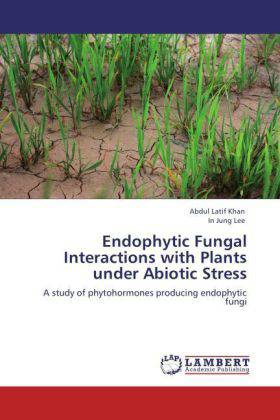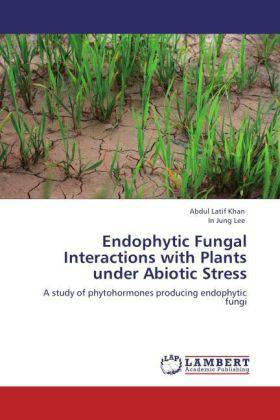
Door de nationale actiedag kan je online bestelling iets langer onderweg zijn dan normaal. Dringend iets nodig? Reserveer en haal na 1u af in een winkel met voorraad.
- Afhalen na 1 uur in een winkel met voorraad
- Gratis thuislevering in België vanaf € 30
- Ruim aanbod met 7 miljoen producten
Door de nationale actiedag kan je online bestelling iets langer onderweg zijn dan normaal. Dringend iets nodig? Reserveer en haal na 1u af in een winkel met voorraad.
- Afhalen na 1 uur in een winkel met voorraad
- Gratis thuislevering in België vanaf € 30
- Ruim aanbod met 7 miljoen producten
Endophytic Fungal Interactions with Plants under Abiotic Stress
A study of phytohormones producing endophytic fungi
Abdul Latif Khan, In Jung Lee
Paperback | Engels
€ 86,45
+ 172 punten
Omschrijving
Salinity and drought are the two most common abiotic stress conditions which have devastated growth and yield of crop plants. Though, plants bestowed with the capability to respond to abiotic stress via signal transduction pathways by adjusting their metabolism. A defensive strategy of plants against such stressful events encompasses a cascade of signals ranging from primary to secondary responses. In extreme environment, fungal symbioses with crops can influence various physiological adaptation and improve plant growth. Thus, reducing the adverse effects of stress. Among fungi, endophytic fungi are the fungal symbionts associated with plants, lives inside tissues or roots and can enhance plant growth during stress conditions. Such association in roots can change key features of plant physiology and mediate abiotic stress. Though, endophytes are novel source of biologically active metabolites but there are few reports elucidating the effects of plant growth regulator specially phytohormones producing endophytic fungi. The present work shed light on various overlooked aspects of these endophytes.
Specificaties
Betrokkenen
- Auteur(s):
- Uitgeverij:
Inhoud
- Aantal bladzijden:
- 180
- Taal:
- Engels
Eigenschappen
- Productcode (EAN):
- 9783847307709
- Verschijningsdatum:
- 18/01/2012
- Uitvoering:
- Paperback
- Afmetingen:
- 152 mm x 229 mm
- Gewicht:
- 272 g

Alleen bij Standaard Boekhandel
+ 172 punten op je klantenkaart van Standaard Boekhandel
Beoordelingen
We publiceren alleen reviews die voldoen aan de voorwaarden voor reviews. Bekijk onze voorwaarden voor reviews.









